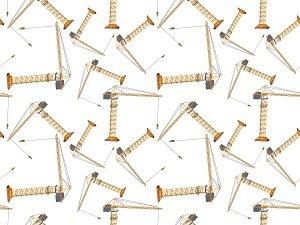
It is exactly the notion the Singapore education system (which was previously discussed in this post Study in Singapore) is going to contest, with the help of London-based architect Thomas Heatherwick. Believing that the form defines the content to a very large extent, they have invited Heatherwick to build an educational building that would be unlike anything we’ve ever seen, meeting the requirements of modern world.
The development of the Internet, cloud technologies, mobile devices and the like completely changed the world of education – today it is quite possible to get the education of the same level no matter where you are, resources the universities possess are no longer available only to a limited number of students studying there, and the universities themselves have turned from knowledge hubs into unpleasant places with endless corridors and little to no human interaction.
Learning Hub in Nanyang Technological University designed by Heatherwick aims at creating a standard for universities of the new age. Instead of dividing the space intro traditional hierarchical classrooms, he created an environment in which both students and professors would be able to mix and collaborate. Instead of long corridors lined with doors there are clusters of cornerless rooms connected with the central area, fitted with great open spaces, gardens and multiple entrances. Instead of desks and forward-facing lecture halls there are community tables where students sit face to face, being encouraged to collaborate and connect with each other.
This atmosphere of accessibility is promoted everywhere and in everything – the environment promotes interaction between professors and students of different disciplines, which are normally separated and exist in isolation from each other. In other words, instead of rigorous, almost military organization of traditional universities, Heatherwick offers an environment where knowledge flows freely and both students and professors interact with each other in less formal conditions.
The building consists of twelve eight-storied towers surrounding the central atrium. Most of the Learning Hub is built of concrete, and this choice of building material proved to be another challenge for the architect, for he wanted to overcome its general unsightliness and make the structure not only sturdy and original in design, but beautiful as well. To that end the walls are cast with specially commissioned 3D pictures by British artist Sarah Finelli, dedicated to art, science, culture and education. As a result, inner walls look as if they were modelled out of wet clay, reminding ancient earthenware.
One thing that Heatherwick probably didn’t plan for, however, is a number of not very deferent nicknames given to his creation by students and journalists alike. Students have apparently taken to calling their alma mater ‘dim sum’, because they look somewhat like stacked dim sum baskets, and journalists repeatedly said that the building looks like a bunch of giant parsnips.
Nevertheless, the university looks brightly into the future and expects great development now that the new chapter of its history has begun.
About the Author
Steven Arndt is a passionate writer, educator and a former History teacher. He tends to reconsider the role of modern education in our society and watches with awe the freedom the youth now has.
